- Home
- Planning Continued
- Contract Management
Contract Management
Published: 2009-04-08
Last updated: 2022-03-20
In this sub-section, we describe contract management from the project manager’s point of view. Our reference process is the project management process.
Usually, there are two or more different legal entities or parties involved in the project, normally in customer / contractor or contractor / sub-supplier relationships. These different parties need to sign a contract before starting implementation phase of a project.
In larger projects with a customer / contractor relationship, on the side of the contractor, a proposal team will own the project management process in definition and planning phase until the contract is signed. Then, they will hand over to an implementation team. So, in the first two phases, a proposal manager is in charge who transfers the project responsibility to a project manager for implementation and closure phase.
What is a contract?
A contract is any agreement between two or more parties where one party agrees to provide certain deliveries or services, and the other party agrees to pay for those deliveries or services.
How do we get a contract between two parties?
... sometimes, much too easily.
In extreme cases, it just takes an offer by a company and the simple acceptance of that offer by the customer, and we have a contract. Typically, we will see some negotiation going on between the two parties before one of them accepts the last offer of the other party. However, since it is so easy to end up in a legally binding contract situation, the first step, generally the offer by the company has to be prepared very carefully.
Even for smaller projects we usually need more than two parties to contribute. So, another important aspect is, how many different parties we need and how the contractual structure should look like. In sub-section Project Contract Structure, we summarize the basic structures to choose.
What is contract management?
Contract management is a continuous process, starting with analysis and evaluation of the customer’s inquiry, and carrying on until contract closure, upon fulfillment of all contractual obligations.
This process overview indicates that contract management activities seem to belong to the responsibilities of the project manager and the whole project team. In fact, they do; however, in larger projects where we have large contracts it is best practice to involve a full-time contract manager who brings in his professional experience, takes responsibility for that process, and ensures the contribution of all team members.
Contract preparation comprises analysis and evaluation of the other parties’ requirements, a clear statement of our own requirements, and negotiation in order to reach agreement between the involved parties. After signing the contract, upon handover, the implementation team needs to analyze the contract in order to ensure that they understand what has been signed and needs to be implemented. When preparing and signing a contract in definition and planning phase, we anticipate how we want to implement the required project results, and fix this anticipation in our planning documents. This means that all our project planning is based on assumptions on how the project environment will develop over implementation and closure phase. As a simple matter of life, these assumptions can turn out to be wrong: certain conditions can change, or certain events can happen so that changes or deviations of the plans and of the contract become necessary. Thus, it would be helpful to prepare the project plans and the contract in a way so that those necessary changes can be implemented with mutual agreement of all involved parties.
As a first tool for contract management, we integrate a change management process into the contract.
As an essential result of this change management process we only
execute a change to the contract upon successful negotiation and mutual
agreement of a change order.
Under certain circumstances (e.g. different interpretations of technical, commercial, or other contractual requirements) this mutual agreement cannot be reached, but the execution of a change takes place anyway, in order to be compliant with higher prioritized project requirements or goals. This we call a claim situation, and we need to integrate a claim management process as a second tool for contract management into the contract. The following picture reflects the general claim management process.
(Please refer to sub-section Project Records to get an overview what counts as records.)
Obviously, claim settlement is the tricky part and needs further explanation.
There are several steps of escalation which we can integrate into the contract as a third tool of contract management. These are the claim settlement or dispute resolution methods.
(1) Negotiation between the two contract parties:
In most claim situations, we will be able to settle the case after negotiating with the other party.
(2) Independent expert opinion:
The contract parties agree to call a neutral third party for
determination of specific contract elements, their interpretation, and
an expert opinion on the case.
(3) Executive tribunal or mini-trial:
This is a process, sometimes called 'mini-trial', in which the parties
make formal but abbreviated presentations of their best legal case to a
panel of senior executives from each party, usually with a mediator or
expert as neutral chairperson. Following the presentations, the
executives meet (with or without the mediator or expert) to negotiate a
settlement on the basis of what they have heard.
(4) Dispute review board:
The dispute review board is a 'standing' adjudication panel used in
major construction contracts. This board is normally appointed at the
beginning of the project and stays in close touch with it, adjudicating
disputes as they arise.
(5) Conciliation or mediation:
Conciliation and mediation are similar. Conciliation refers to a process
in which the third party takes a more activist role in putting forward
terms of settlement or any opinion on the case between the two parties.
While in mediation, the third party provides support to the parties
during their negotiation but does not interfere with the content of the
case or its settlement.
(6) Adjudication:
In this process a neutral third-party, the adjudicator, makes summary
binding decisions on contractual disputes without following the
procedures of arbitration.
(7) Arbitration:
This is a formal process, agreed by the parties, regularly with three
arbitrators who are neutral and independent. They make a final and
binding decision as first instance. On average, the process duration is
two to three years. It follows the arbitration clauses set by the
International Chamber of Commerce (ICC), Paris, and it requires the
support of external lawyers.
(8) Court trial:
After arbitration as first instance, we usually can go for a formal court trial as second and then third instance.
Steps (1) through (6) are not legally binding, but increasingly difficult to ignore or reject. Due to the duration and formal character, arbitration and court trial are the most expensive ways to settle claims. Therefore, it is worthwhile to discuss carefully with the other party before signing the contract which of the first 6 steps could be integrated into the contract.
"The best claim is no claim"
This statement seems to be obvious. If possible we follow the change management process for most of the deviations which we cannot avoid. This requires a common understanding of the contract and the underlying project planning between the contract parties. However, as mentioned above, there might still remain some claim situations.
Fundamentals of a successful claim
For a successful claim, the contractual basis is essential.
The second building block consists of the records of events and their analysis in terms of impact. Please refer to sub-section Project Records to get an overview what counts as records.
In order to define the claim strategy the following questions can be helpful:
- what relationship to our contractual partner do we want to keep?
- what are the policies of our other involved or affected business units?
- how does the claim correspond to the project goals?
- how does the claim correspond to our general business goals?
- who needs to be involved?
Please refer to sub-section Project Claim Management for more details on how to deal with claims, and to the case study in sub-section Project Claim Analysis for an example of a claim case analysis.
Our presentation of contract management can only reflect the basics of the matter. For more details, especially the legal aspects please refer to literature such as (to be defined).
Traditional PM
Learning Path Navigation
|
|
|
Return to Project Planning Continued
Return from Contract Management to Home Page
|
|
|
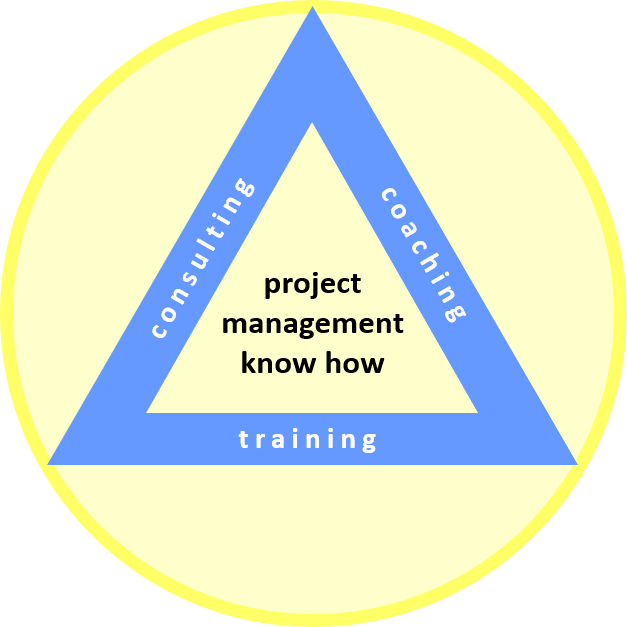

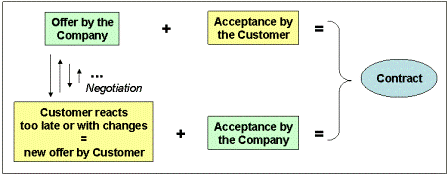

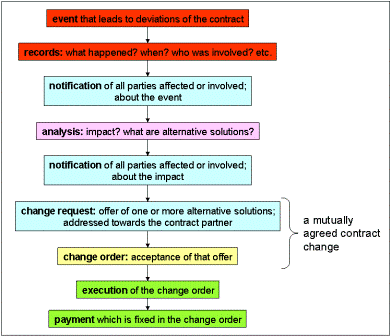
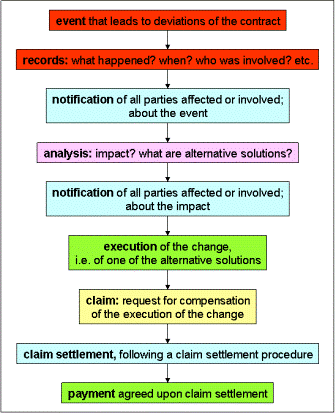
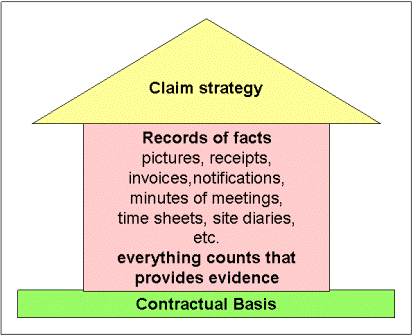
Your Comments
Have your say about what you just read! Leave me a comment in the box below.